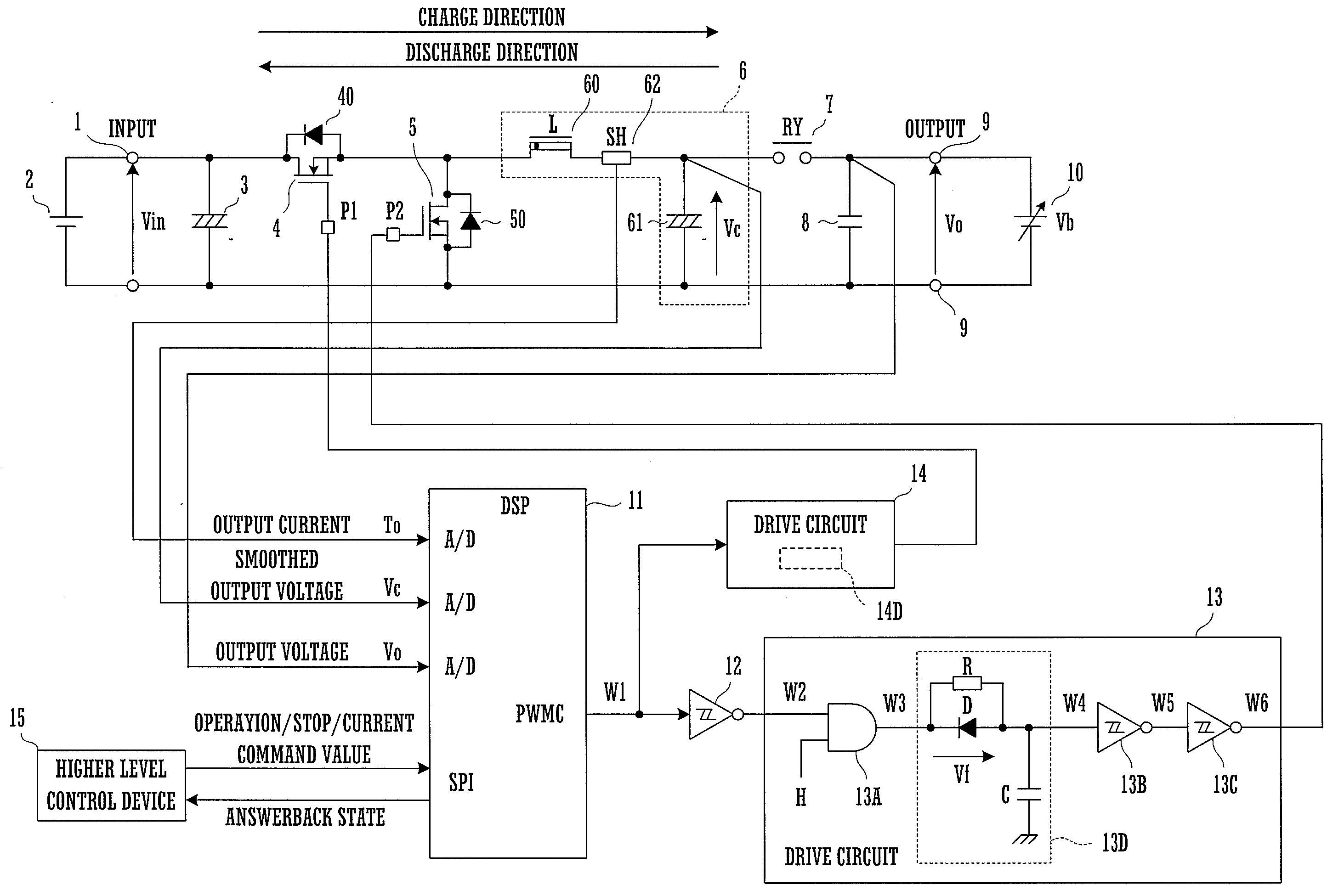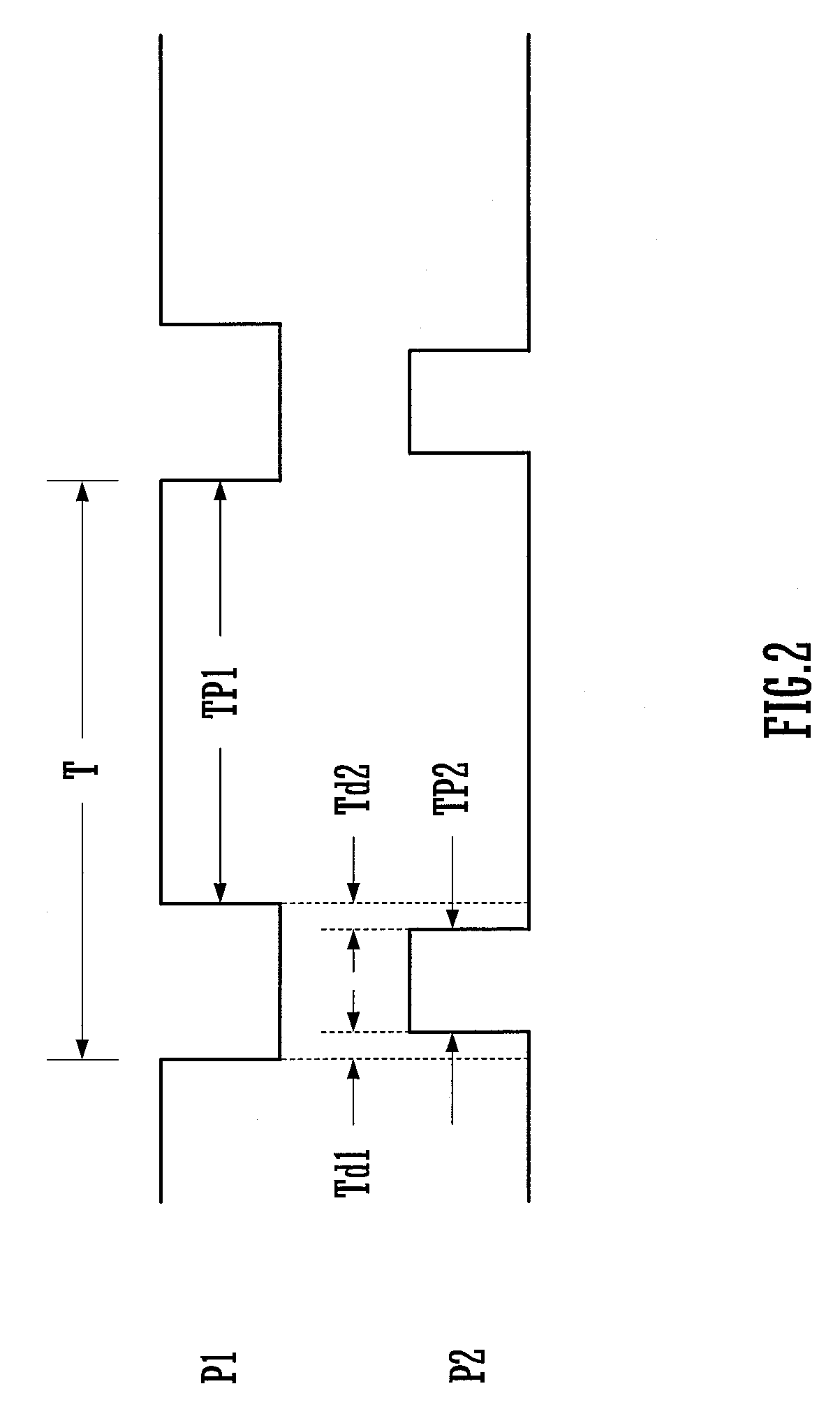Power supply device for charge/discharge device, and charge/discharge device
- Summary
- Abstract
- Description
- Claims
- Application Information
AI Technical Summary
Benefits of technology
Problems solved by technology
Method used
Image
Examples
Embodiment Construction
[0035]FIG. 1 is a block diagram of a charge / discharge device which is an embodiment of the present invention.
[0036]This charge / discharge device is used as a test device for testing the characteristics of a secondary battery by repeatedly charging and discharging that secondary battery.
[0037]A DC power supply unit 2 is connected to input terminals 1. Provided that its output voltage is a DC voltage, this DC power supply unit 2 may comprise a battery or an AC-DC converter or the like.
[0038]To the input terminals 1 there are connected in parallel a first smoothing capacitor 3 and a series circuit comprising a first switching element 4 and a second switching element 5. By “connected in parallel” is meant being directly or indirectly electrically connected in parallel between the input terminals 1, and includes both being connected in parallel without the interposition of any element or circuit, and being connected in parallel via some element or circuit.
[0039]Each of the first switching...
PUM
 Login to View More
Login to View More Abstract
Description
Claims
Application Information
 Login to View More
Login to View More - R&D
- Intellectual Property
- Life Sciences
- Materials
- Tech Scout
- Unparalleled Data Quality
- Higher Quality Content
- 60% Fewer Hallucinations
Browse by: Latest US Patents, China's latest patents, Technical Efficacy Thesaurus, Application Domain, Technology Topic, Popular Technical Reports.
© 2025 PatSnap. All rights reserved.Legal|Privacy policy|Modern Slavery Act Transparency Statement|Sitemap|About US| Contact US: help@patsnap.com



